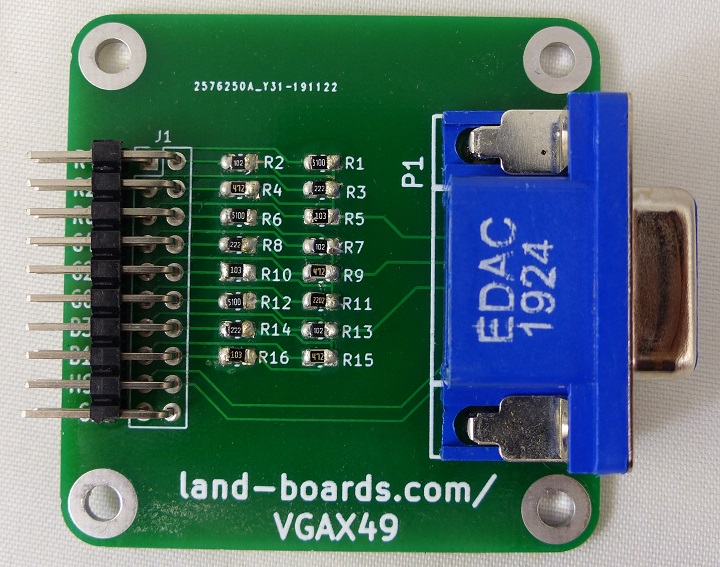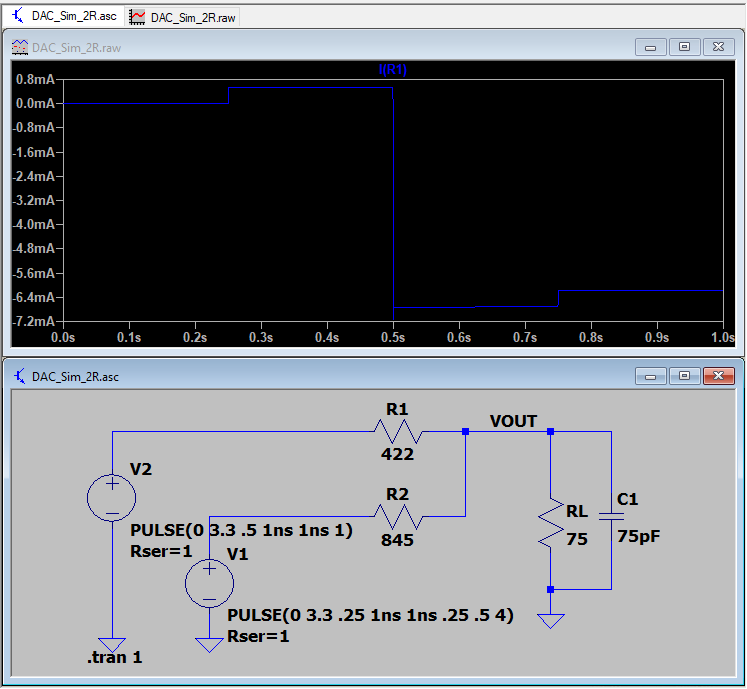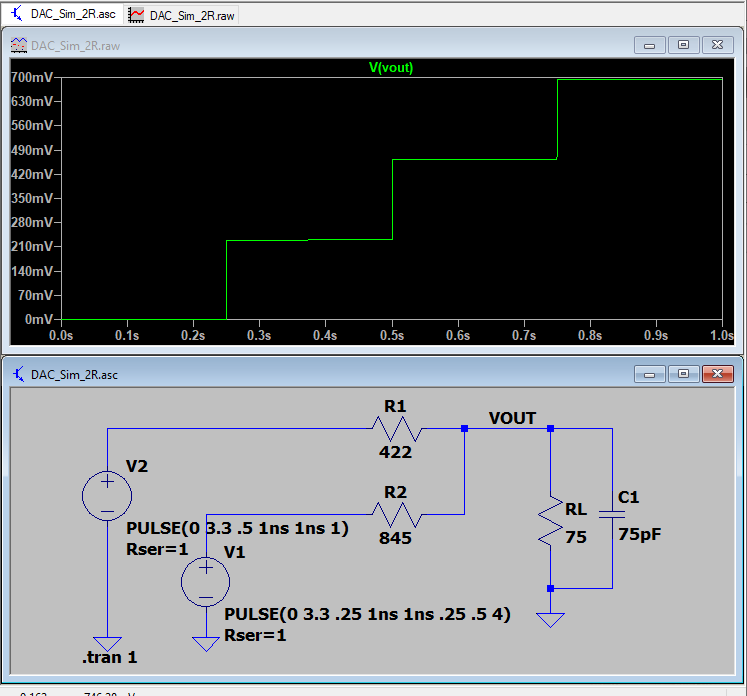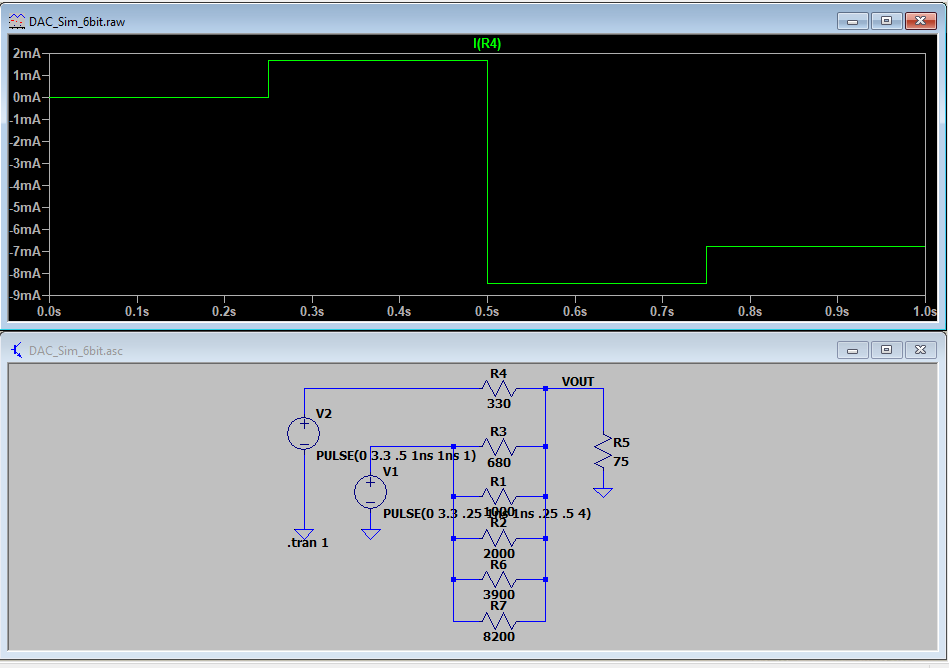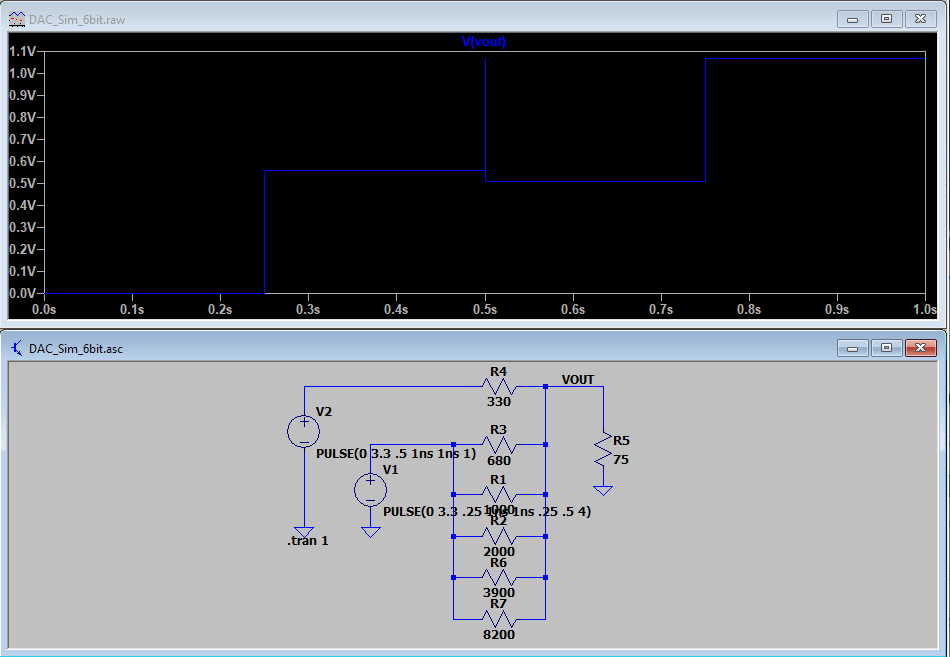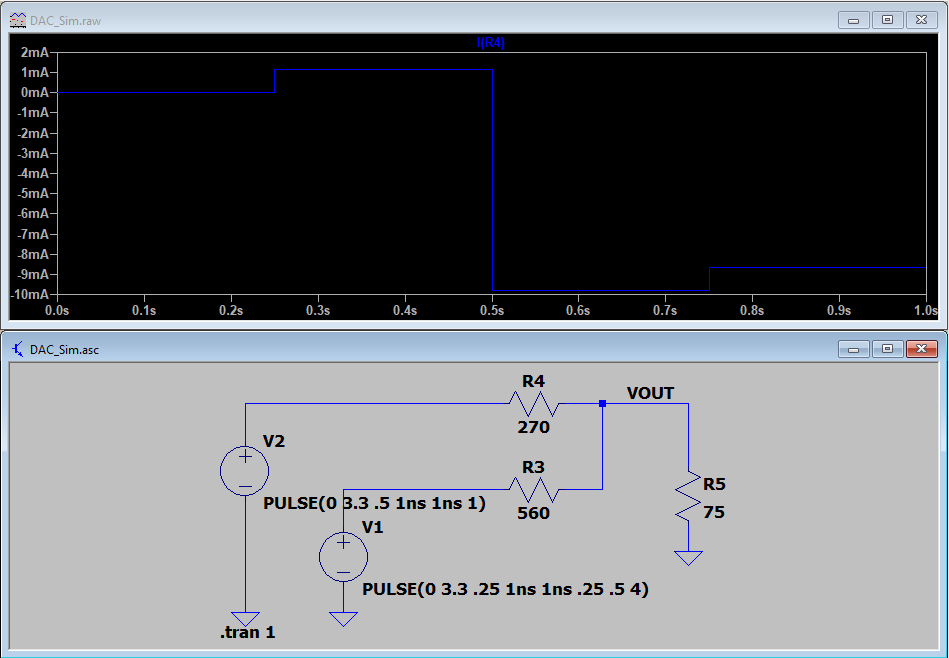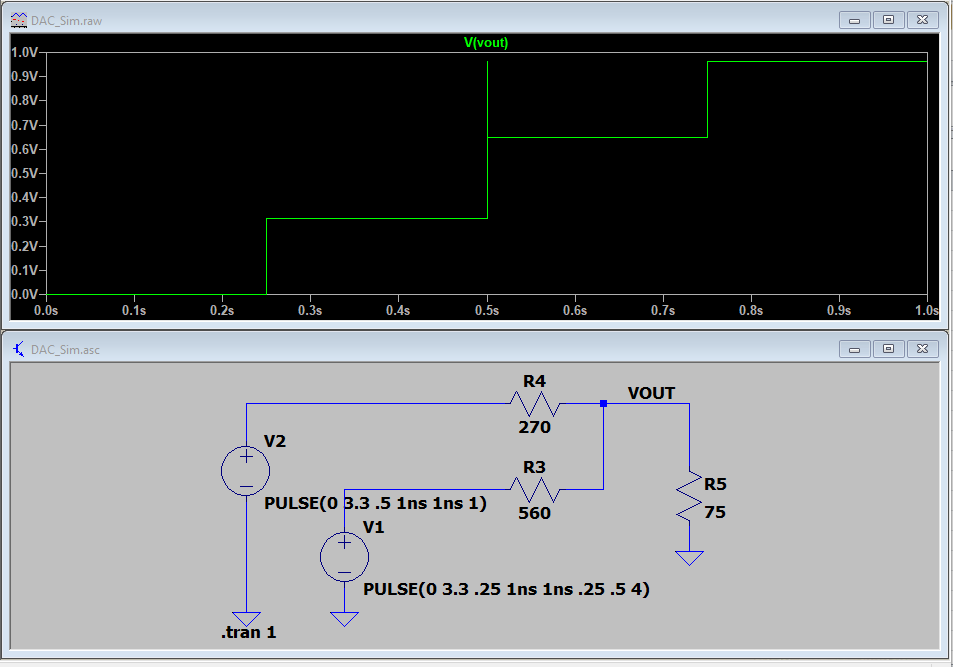Difference between revisions of "VGAX49"
Jump to navigation
Jump to search
Blwikiadmin (talk | contribs) |
Blwikiadmin (talk | contribs) |
||
| Line 22: | Line 22: | ||
== Simulation == | == Simulation == | ||
| + | * Each color is independently driven and can be considered individually | ||
* Critical design criteria is output voltage and current capability of the driving part | * Critical design criteria is output voltage and current capability of the driving part | ||
* Use common value, 5% resistors | * Use common value, 5% resistors | ||
* Each resistor is about 2X the value of the previous resistor | * Each resistor is about 2X the value of the previous resistor | ||
| + | * 1V is drive level for VGA specification | ||
| + | ** VGA presents a 75 Ohm load | ||
| + | ** 1V at 75 Ohms is 13.3 mA | ||
| + | * Series resistors present a voltage divider between the resistors on the card and the VGA load | ||
| + | * The resistor with the smallest resistance value has larger current from the source device pin | ||
| + | * Current switches from source to sink depending on the voltages on the other resistors | ||
| + | * Each resistor is 2X the value of the previous resistor | ||
| + | * Too much effort is put into using precision resistors - the human eye is not that picky | ||
=== 2:2:2 Resistor Simulation === | === 2:2:2 Resistor Simulation === | ||
| Line 30: | Line 39: | ||
* Assumptions | * Assumptions | ||
** 3.3V Drive out of FPGA | ** 3.3V Drive out of FPGA | ||
| − | |||
** 8 mA max drive current (typical FPGA drive current) | ** 8 mA max drive current (typical FPGA drive current) | ||
| − | * | + | * Using common value, 5% resistors |
| − | + | * 330 Ohm series resistor into a 75 Ohm load is 8.15 mA (close enough to max of FPGA) | |
| − | |||
| − | |||
| − | |||
| − | |||
| − | |||
| − | * 330 Ohm series resistor into a 75 Ohm load is 8.15 mA | ||
** Voltage with 330/75 ohm voltage divider is 0.61V - not full brightness | ** Voltage with 330/75 ohm voltage divider is 0.61V - not full brightness | ||
| − | |||
* Next standard value from 330 ohms is 680 ohms | * Next standard value from 330 ohms is 680 ohms | ||
** Voltage is 0.83V - better brightness | ** Voltage is 0.83V - better brightness | ||
| Line 53: | Line 54: | ||
* Assumptions | * Assumptions | ||
** 3.3V Drive out of FPGA | ** 3.3V Drive out of FPGA | ||
| − | |||
** 8 mA max drive current (typical FPGA drive current) | ** 8 mA max drive current (typical FPGA drive current) | ||
| − | * | + | * Using common value, 5% resistors |
| − | + | * 330 Ohm series resistor into a 75 Ohm load is 8.15 mA (close enough to max of FPGA) | |
| − | |||
| − | |||
| − | |||
| − | |||
| − | |||
| − | * 330 Ohm series resistor into a 75 Ohm load is 8.15 mA | ||
** Voltage with 330/75 ohm voltage divider is 0.61V - not full brightness | ** Voltage with 330/75 ohm voltage divider is 0.61V - not full brightness | ||
| − | |||
* Next standard value from 330 ohms is 680 ohms | * Next standard value from 330 ohms is 680 ohms | ||
** Voltage is 0.83V - better brightness | ** Voltage is 0.83V - better brightness | ||
Revision as of 18:45, 13 February 2020
Contents
Features
- Digital VGA adapter
- 16-bit digital video
- 5:6:5 (R:G:B) mapping (maximum)
- 2:2:2 (R:G:B) mapping (option)
- Uses summing resistors
- DB-15F connector
- 49x49mm ODAS form factor
- Mounting holes
Connectors
J1 - Digital Connections
P1 - VGA connector
Simulation
- Each color is independently driven and can be considered individually
- Critical design criteria is output voltage and current capability of the driving part
- Use common value, 5% resistors
- Each resistor is about 2X the value of the previous resistor
- 1V is drive level for VGA specification
- VGA presents a 75 Ohm load
- 1V at 75 Ohms is 13.3 mA
- Series resistors present a voltage divider between the resistors on the card and the VGA load
- The resistor with the smallest resistance value has larger current from the source device pin
- Current switches from source to sink depending on the voltages on the other resistors
- Each resistor is 2X the value of the previous resistor
- Too much effort is put into using precision resistors - the human eye is not that picky
2:2:2 Resistor Simulation
- Assumptions
- 3.3V Drive out of FPGA
- 8 mA max drive current (typical FPGA drive current)
- Using common value, 5% resistors
- 330 Ohm series resistor into a 75 Ohm load is 8.15 mA (close enough to max of FPGA)
- Voltage with 330/75 ohm voltage divider is 0.61V - not full brightness
- Next standard value from 330 ohms is 680 ohms
- Voltage is 0.83V - better brightness
5:6:5 Resistor Simulation
- Assumptions
- 3.3V Drive out of FPGA
- 8 mA max drive current (typical FPGA drive current)
- Using common value, 5% resistors
- 330 Ohm series resistor into a 75 Ohm load is 8.15 mA (close enough to max of FPGA)
- Voltage with 330/75 ohm voltage divider is 0.61V - not full brightness
- Next standard value from 330 ohms is 680 ohms
- Voltage is 0.83V - better brightness
- Voltage with all 6 resistors (Green case) is 1.07V (full brightness)
ESP32 Drive
- The ESP32 drive current is significantly more than an FPGA
- 40 mA
- More than enough to drive to 1V (saturation level on VGA).
- 1V at 75 Ohms is 13.3 mA
- 2:2:2 270/470 Ohm simulation
- -10 mA (max)
- 0.96V (max)
